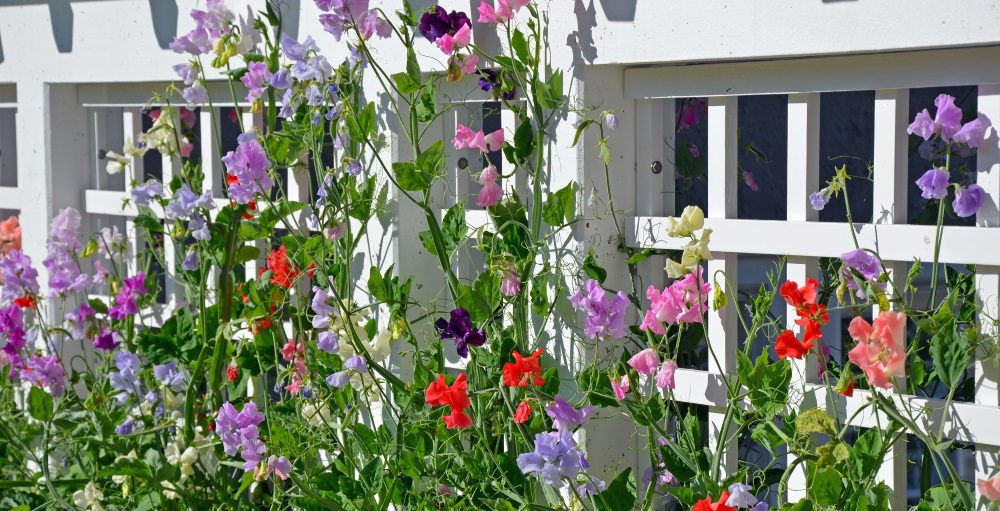How to Grow Sweet Peas

There's an old tradition that says you should sow your Sweet Pea seeds on the eve of St Patrick's Day, or before sunrise on March 17th. Whether you're a believer or not, it's definitely a tradition many Australian gardeners follow.
Sweet Peas are an easy to grow annual flower that make a colourful addition to the garden during the cooler months. From seed packet to soil, we've put together some handy information to help you grow Sweet Peas from seed. It is best to start preparing your soil about three weeks out from sowing, so aim to get started around the 24th of February. In hotter regions sowings can be made later into the autumn months when the soil is cooler. Perennial Sweet Pea varieties such as our Sweet Pea Everlasting Mix can be sown both in Spring and Autumn.
Soil Prep
When we talk about preparation we're referring to your garden's soil. Sweet peas enjoy more of an alkaline soil with a pH of around 7-8, if you aren't sure of your soils pH at home testing kits are readily available at garden centres. If your soil is not naturally this alkaline (not many of us are so lucky) you'll need to add some garden lime to the soil first to raise the pH.
Be sure to add a generous amount of good quality compost with a balanced slow release fertiliser to your garden beds and incorporate well, breaking up any compaction with a garden fork as you go. Try to avoid high nitrogen feeds or fresh manures, too much nitrogen will promote a lot of leaf growth rather than flowers.
You will find your Sweet peas are happiest when their heads are in the sun and roots are deep in cool, moist soil. If your garden gets a lot of sun, plant low-growing annuals in front such as alyssum or pansies to shade your Sweet peas roots. Apply mulch such as sugarcane over the beds too to keep the soil from drying out quickly.
Sowing Seeds
After roughly 2-4 weeks you should be ready to sow your seeds. Give your soil a good watering so it's nice and damp and dig a trench no deeper than 3cm. Roughly measure the depth using your finger or even a pencil and place your seeds into the holes and press down firmly.
Unless the weather is particularly hot and dry; further watering won't be needed. Sweet Peas hate having 'wet feet' and is the reason we don't recommend soaking the seeds prior to sowing as they are prone to rot. If your region is having a particularly rainy season and you are worried about the seeds rotting, try out sowing the seeds into some Jiffy Peat Pellets and transplanting them out as seedlings. All in one soil pellets eliminate the risk of transplant shock and root disturbance so you will be sure to have happy seedlings with this method.
Watering
Germination can take anywhere between 7 - 15 days depending on the soil temperature. Gradually fill in the trench with soil the more your seedlings grow. When determining if your plants require water put your finger into the soil bed to roughly the first joint. If dry, water them at soil level and do so in the morning. Sweet Pea flowers suffer from bud drop so be careful not to over water.
Climbing Options
It doesn't take long for your Sweet peas to climb, so supports should be added at the planting stage.
Except for the bush types, it's a good idea to give at least 1.8m of good support. You'll find that trellises are most commonly used however alternative options can be chicken wire, bushy stubbly twigs, fishing line hung from above. It's really anything that your plant can climb.
Mr Fothergill's stocks a huge range of Sweet Pea seeds, perfect for growing this Autumn. Shop our Sweet Pea range here



